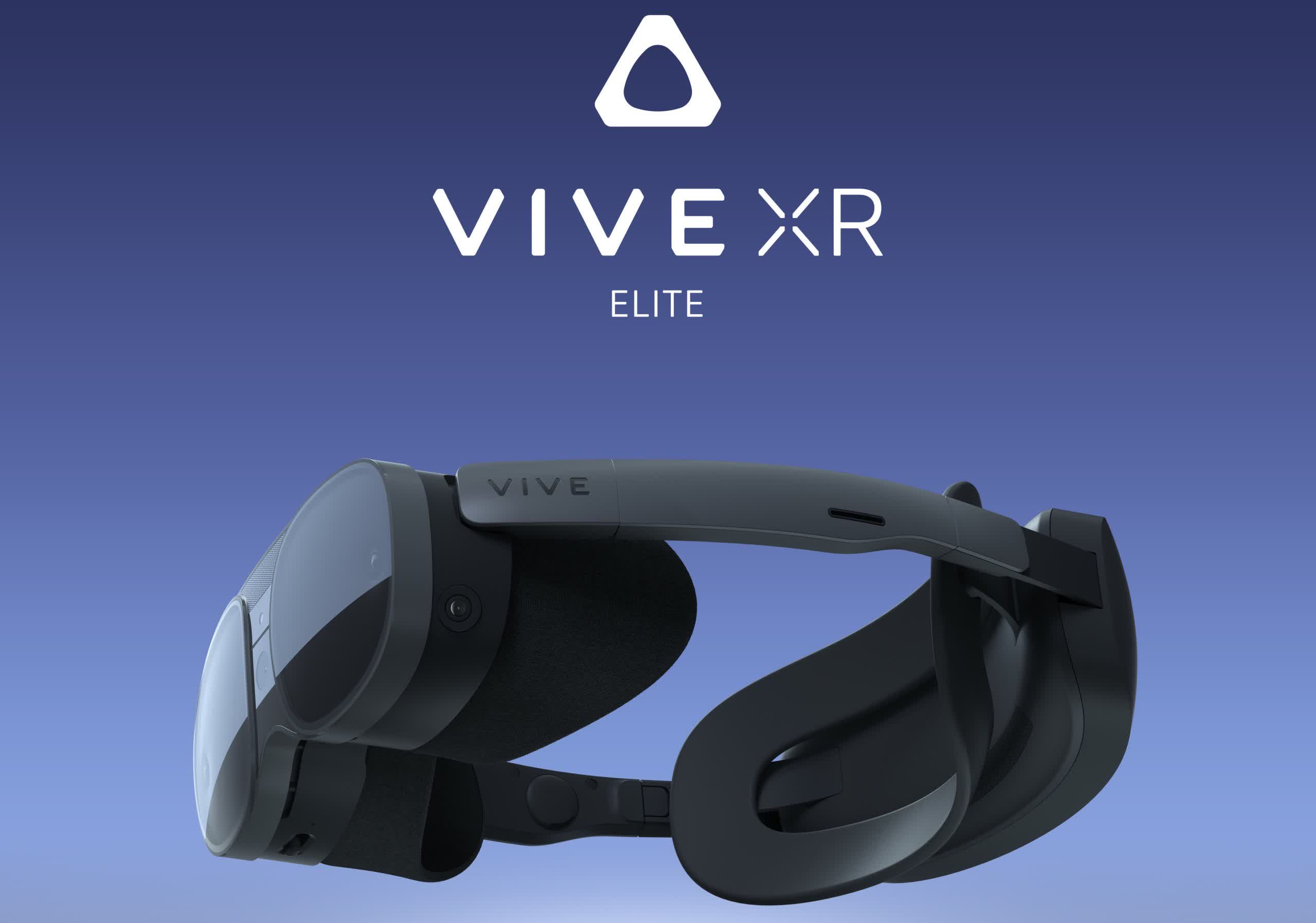In brief: HTC teased its response to the Meta Quest Pro last month, and now it's taken the shroud off. The company's latest VR/AR headset, set to arrive in March, is similar to the competition but lighter, a few hundred dollars cheaper, and with a few unique features. HTC says it designed the Vive XR Elite to excel at productivity and entertainment.

Pre-orders are now open for HTC's Vive XR Elite headset, which launches in March for $1,100. It could offer users a lightweight alternative to the $1,500 Meta Quest Pro, with similar hardware, color pass-through functionality, and software support.
The XR Elite features four wide-FOV tracking cameras, a high-resolution RGB camera, and a depth sensor. At 1920 x 1920 per eye, HTC's new product has a slightly higher screen resolution than the Quest Pro. At 635g, the XR Elite weighs almost 100g less than Meta's flagship.
Other specs, like the 110-degree FOV, 90Hz maximum refresh rate, 128GB of storage, and 12GB of RAM, sit in line with the competition. HTC also stuck with the Qualcomm Snapdragon XR2 – the same processor as the $400 Meta Quest 2.
One of the XR Elite's unique features is its approach to vision adjustment. HTC designed its "stepless" inter-pupillary tuning and adjustable diopters so all users could enjoy the headset without wearing glasses. Users can also detach and quickly swap the XR Elite's battery. One fully-charged battery should last around two hours, while an internal backup battery gives users extra time to replace the main one without shutting down. HTC plans to launch face-tracking and eye-tracking accessories for its headsets later this year.
Users can run PC VR software on the XR Elite through USB-C or Wi-Fi, or operate the headset alone with apps and games from HTC's Viveport platform. Pre-orders before February 15 include five Viveport games.
Although HTC's newest product compares favorably to the Quest Pro and Quest 2, it will likely soon have to compete with Meta's next headset, which will probably occupy the Quest 2's price point sometime this year. Sony's upcoming PlayStation VR2 may also be a factor to watch out for.
Sony's headset will require a PlayStation 5 console and will only play console games, so it won't directly compete with Meta and HTC, but its specs look impressive for $500. Its OLED displays will offer users 2000 x 2040 pixels per eye at a maximum 120Hz when it launches on February 22. Apple is also reportedly designing a VR/AR headset.
https://www.techspot.com/news/97186-htc-unveils-1100-lightweight-vive-xr-elite-vrar.html